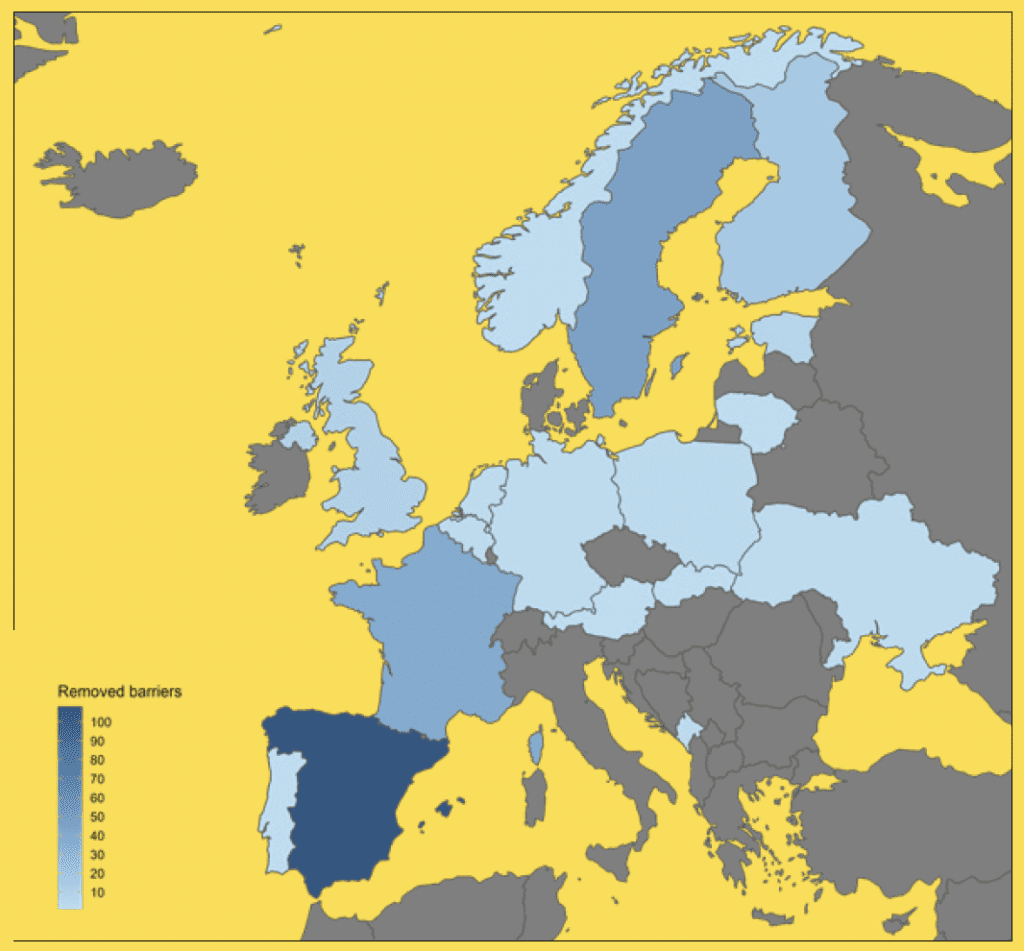
There are over one million barriers on Europe’s rivers, many built over a century ago and currently serving little or no economic purpose, but still affecting the local ecosystems. This has triggered a campaign and a political commitment by countries to start removing many of them.
The EU has set the goal of allowing at least 25,000 kilometers of rivers to flow freely again by 2030, and so far at least, it seems committed to the target.
Last year, Europe had a record-breaking year for barriers removals, according to a new report by the Dam Removal Europe organization. At least 239, including dams and weirs, were taken out in 17 countries in Europe in 2021. Spain was the leading country with 108 structures removed, including the tallest dam taken out last year (13 meters).
“Dam removal is the most efficient tool to restore free-flowing rivers full of fish. This tool should be implemented everywhere in Europe, starting with the old and obsolete barriers that are out of use or have no economic function anymore,” Herman Wanningen, Director of the World Fish Migration Foundation, said in a statement.
Dams and biodiversity
Dam Removal Europe (DRE) is a coalition of seven EU environmental organizations with the overall goal of restoring the free-flowing state of rivers and streams across Europe. Their objective is to establish barrier removal as a restoration tool and to mainstream this practice, accelerating the EU’s dam removal strategy as much as possible.
For DRE, the removal of river barriers is justified by the impact these have on natural wetland ecosystems – including degraded habitats, reduced species abundance and distribution ranges, and altered sediment loadings. A study from 2020 found there are at least 1,2 million barriers in 36 European countries, with 15% of them seen as obsolete.

Barrier removals benefit recreational activities and aesthetics and have significant positive effects on fisheries and on local property values. Also, regarding restoration of fish passage, one of the main goals of barrier removal projects worldwide, recolonization by migratory fish is observed after dismantling the riverine barriers
In its latest report, the DRE argued most of the barriers removed last year were small dams and weirs, but 24% were higher than two meters. The total number of barriers removed in 2021 represents a 137% increase from 2020, the organization found, with the number of European countries that reported barrier removals increasing by six.
Three countries – Portugal, Montenegro, and Slovakia – recorded their first-ever dam removals last year. The barrier in Portugal was located along River Vascão in the Southeastern part of the country. In Slovakia, it was an abandoned weir at River Hučava in Central Slovakia, and in Montenegro, it was a weir from River Vezišnica.
“All too often there is skepticism about the demolition of transverse structures, even if they are non-functional. This shows that in addition to the barriers in the rivers, those in people’s minds should also fall. Removing barriers is the best way to bring life back to rivers,” Tobias Schäfer, water officer at WWF Germany, said in a statement.









